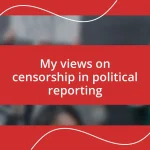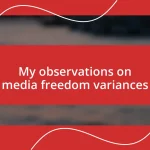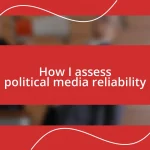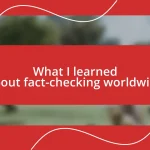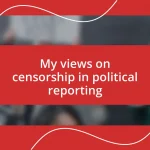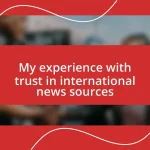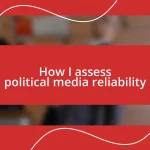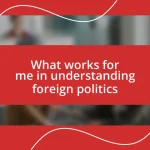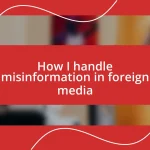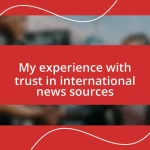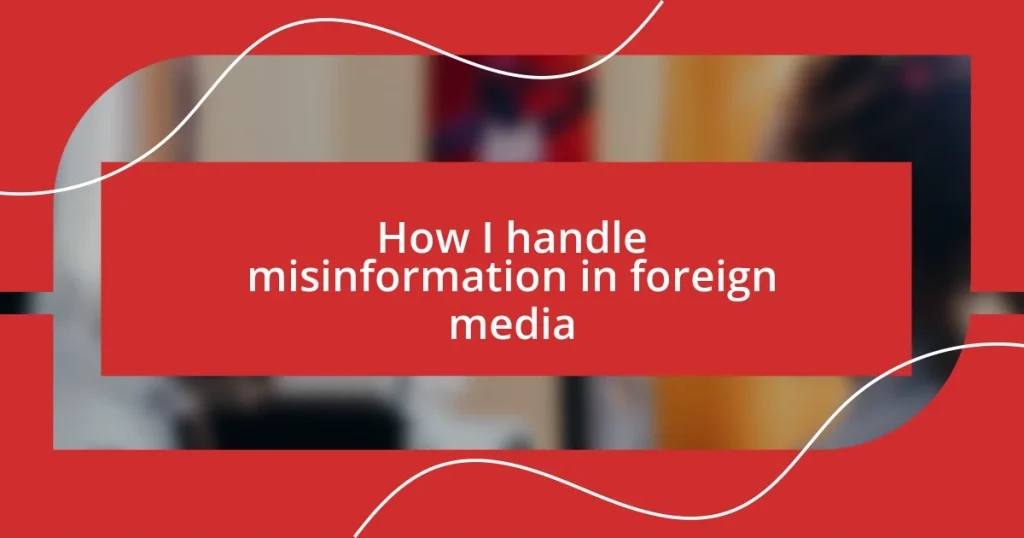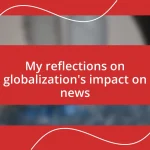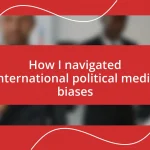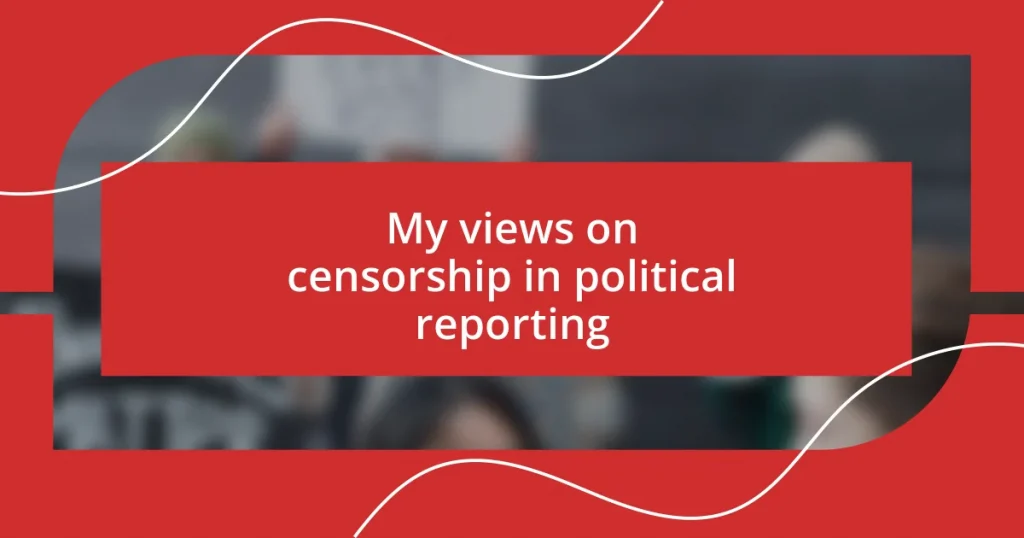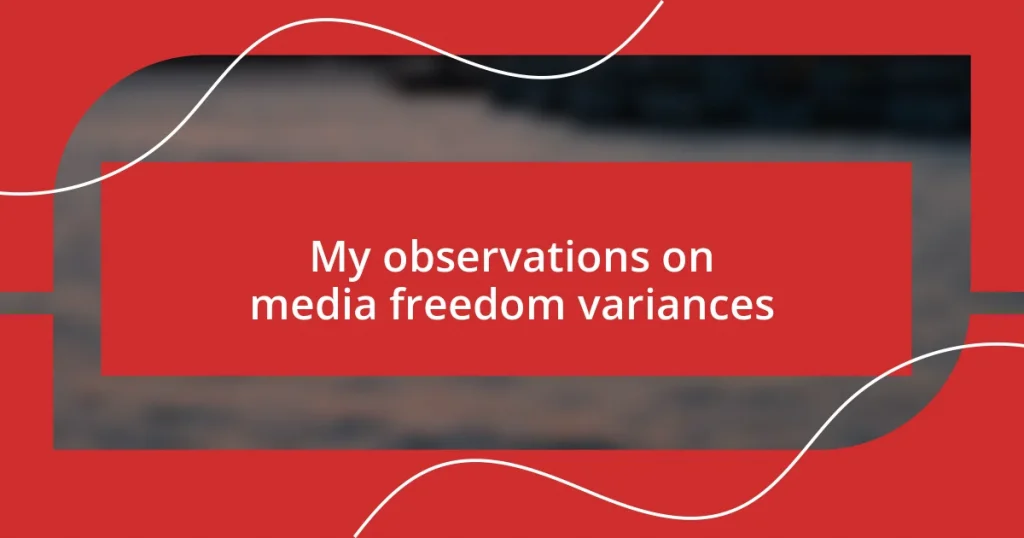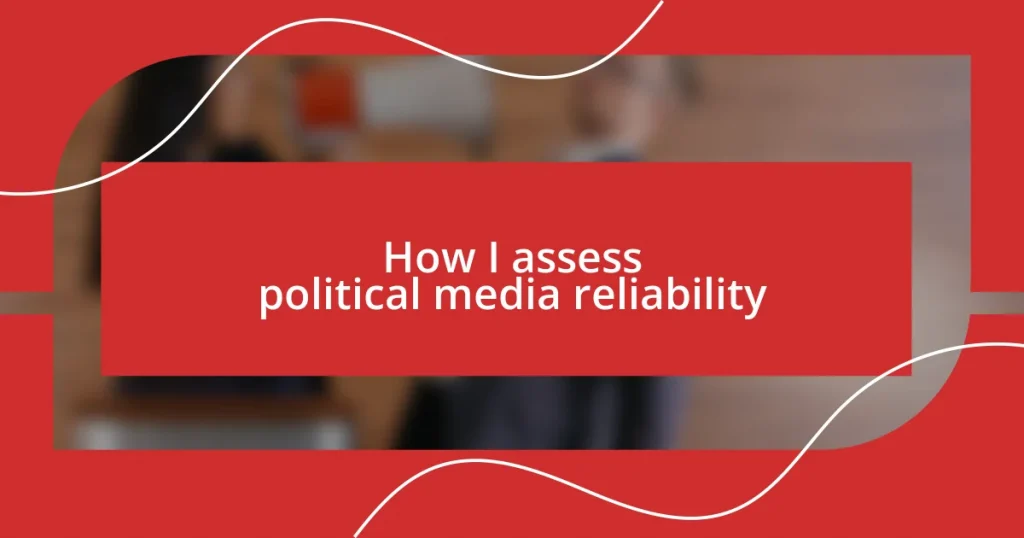Key takeaways:
- Understanding foreign media biases involves recognizing the cultural and political contexts that shape news coverage, prompting the need to seek diverse perspectives for a well-rounded view.
- Common misinformation tactics include sensationalism, cherry-picking data, and overwhelming complexity, highlighting the importance of critical evaluation and fact-checking.
- Engaging in community discussions and promoting media literacy can enhance understanding of misinformation, encouraging collective learning and critical thinking among peers.
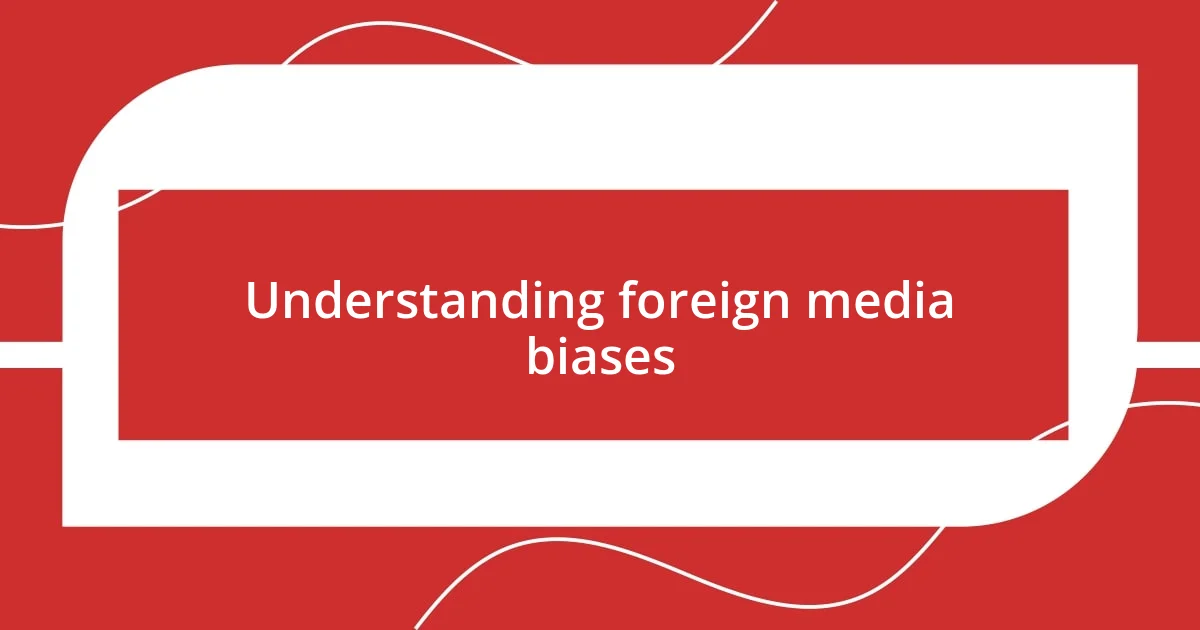
Understanding foreign media biases
Understanding foreign media biases requires an awareness of the cultural, political, and economic contexts in which these outlets operate. I’ve often found myself questioning why certain stories receive extensive coverage, while others barely get a mention. Have you ever noticed how news from one country can portray events so differently than what you’ve seen at home?
For instance, when I followed reports on international conflicts, I found that the bias in coverage often reflects a nation’s foreign policy. I remember reading two articles about the same event—one from a Western outlet and another from a local source in the affected region. The differences were stark, prompting me to ask myself, which narrative was more aligned with the truth?
It’s crucial to scrutinize the angle from which a story is told. I vividly recall feeling frustrated when I realized how my perception of global events shifted simply by consuming news from various sources. This experience led me to embrace a more critical viewing lens, encouraging me to seek out diverse viewpoints to form a more comprehensive understanding—something I believe everyone should strive for.
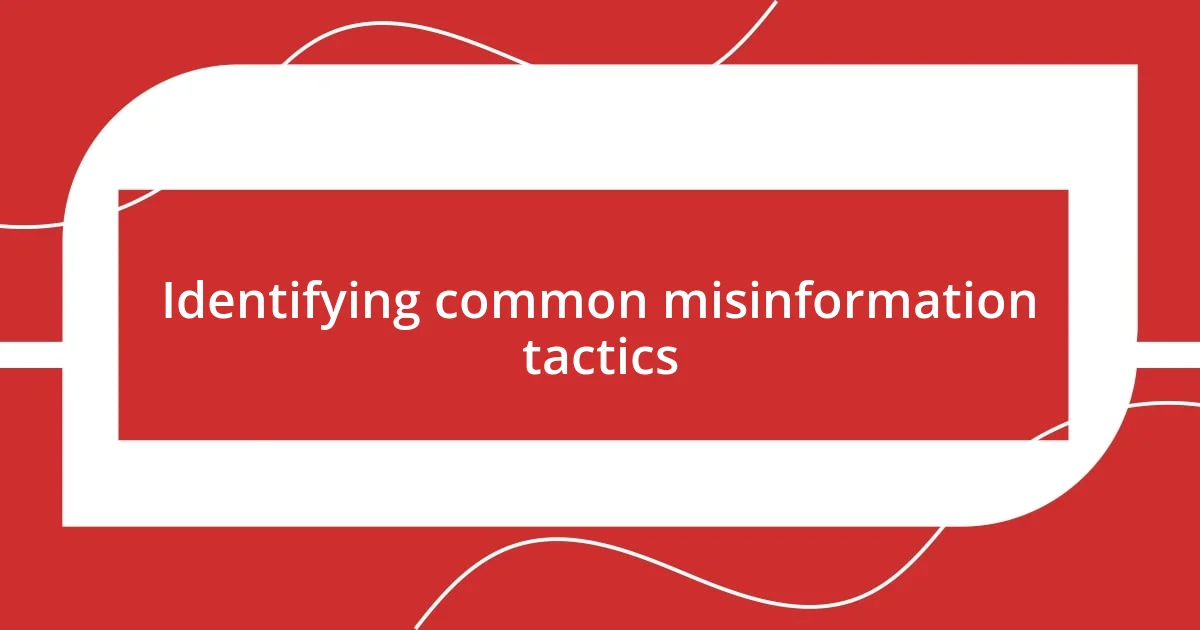
Identifying common misinformation tactics
Misinformation often employs tactics that can be tricky to spot. One common tactic is sensationalism, where facts are exaggerated to provoke strong emotional reactions. I recall scrolling through social media one evening, stumbling upon an eye-catching headline that promised shocking revelations. As I delved deeper into the article, it became clear that the sensational claims were not fully supported by the evidence presented. It left me feeling a mix of disappointment and caution, reminding me to dig below the surface.
Another tactic to be aware of is cherry-picking data. This involves selectively presenting facts that support a specific narrative while ignoring contradictory evidence. I remember a discussion with a friend who had strong opinions on climate change based on a single article that only highlighted studies supporting her viewpoint. It made me realize the importance of seeking more comprehensive information, rather than relying solely on pieces that affirm what I already believe.
Lastly, confusion and ambivalence are often strategic. Misinformation can flood the reader with complex details, making it hard to discern fact from fiction. There’s a moment I can’t forget when I read an article that provided numerous statistics without clear conclusions. I felt overwhelmed, yet strangely compelled to believe the data. It brought home the importance of clarity in reporting and how easily one can be swayed by convoluted information.
| Tactic | Description |
|---|---|
| Sensationalism | Exaggerating facts to provoke emotional reactions. |
| Cherry-picking | Selective presentation of facts to support a narrative. |
| Confusion | Overwhelming readers with complex details to obscure the truth. |
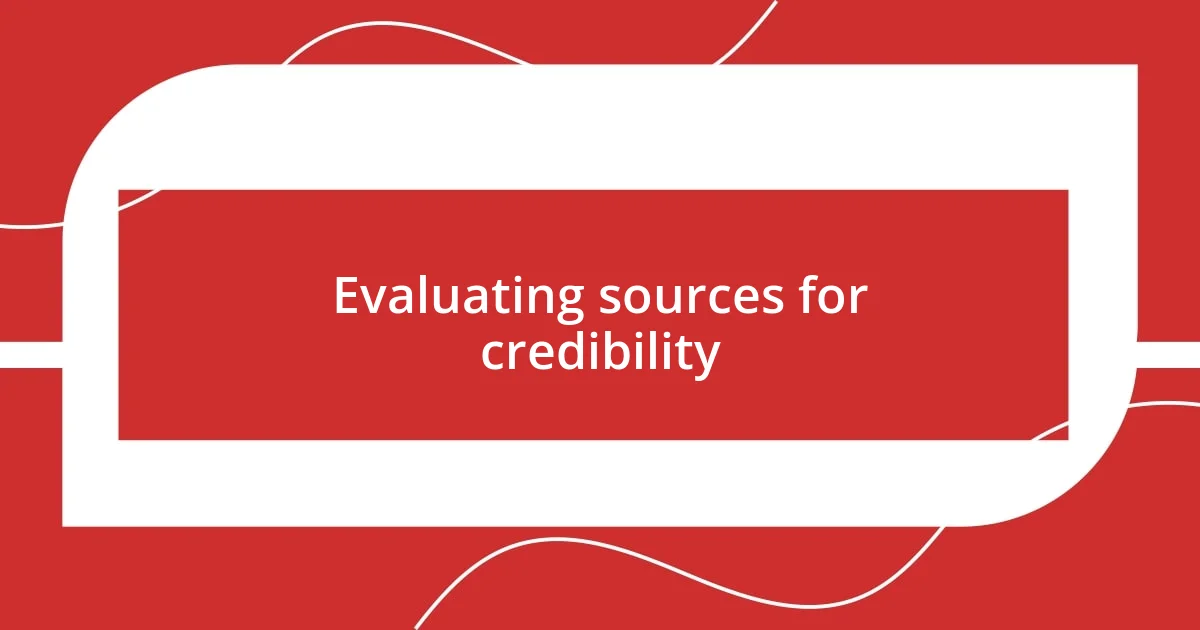
Evaluating sources for credibility
Evaluating the credibility of foreign media sources is essential to navigate the complexities of global information. When I’m confronted with unfamiliar outlets, I use a few strategies that have served me well. One approach is to check the source’s background and reputation. I know from experience that some outlets have a history of promoting agendas, while others maintain a commitment to journalistic integrity. It’s fascinating how a quick search can reveal the editorial slant of a publication, often influencing how I perceive the information they present.
Here are some key factors I consider:
- Author credentials: Check whether the author has relevant expertise or experience.
- Published by reputable organizations: Look for recognition from established media.
- Cross-referencing: Compare claims with reports from other sources to verify accuracy.
- Date of publication: Ensure the information is current and relevant.
- Bias assessments: Utilize resources that evaluate media bias to gauge the outlet’s perspective.
In my journey through understanding foreign media, I often find myself asking probing questions about the context and mission of the sources I encounter. For instance, I once stopped to consider an international news piece that presented alarming statistics on public health in another country. A brief investigation revealed that the publication often takes a sensationalistic approach to its reporting. Seeing this motivated me to approach similar topics with a cautious and questioning mindset, reinforcing the concept that not all stories are created equal.
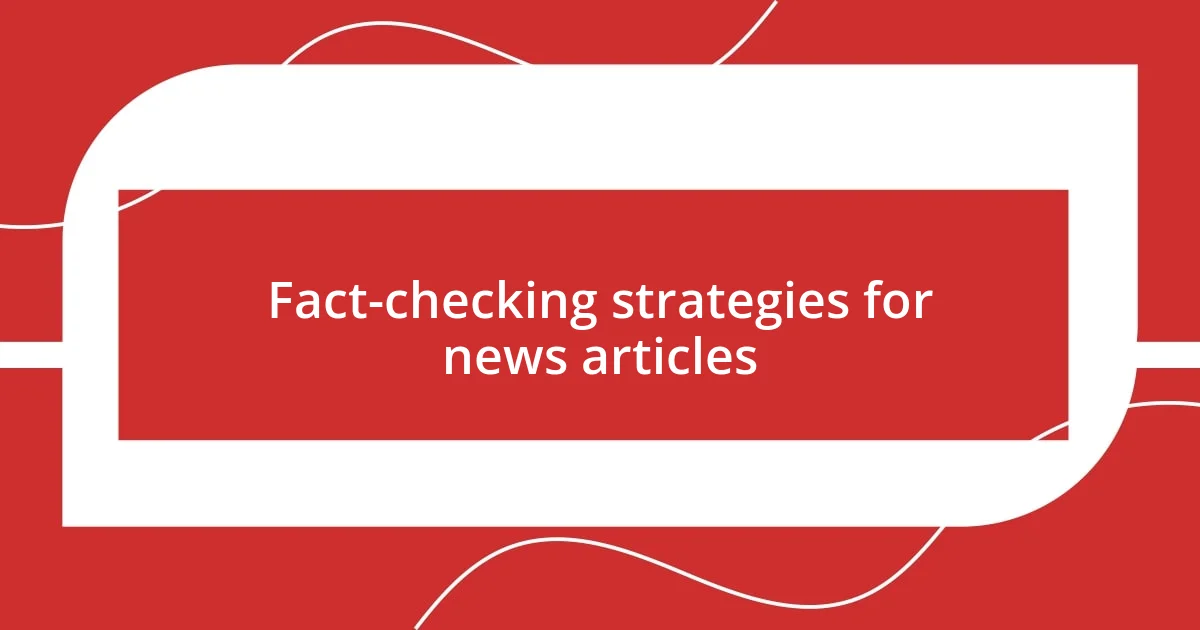
Fact-checking strategies for news articles
Fact-checking news articles begins with verifying the information against reliable data. I always take a moment to look for original sources or studies that back up the claims made in an article. For instance, I once read a piece about a staggering rise in unemployment claims following a new policy announcement. Curious, I tracked down the cited report and found it was misrepresented—what was actually a modest uptick was portrayed as a crisis. It was a reminder that diligent fact-checking can drastically alter my understanding of an issue.
Another effective strategy is to engage with fact-checking websites. I’ve found platforms like Snopes or FactCheck.org to be invaluable resources. When I came across a viral claim regarding a political figure’s statements, I quickly turned to these sites. The clarity and thoroughness in their evaluations provided me with a sense of relief and confirmation. It’s comforting to know that a community of dedicated individuals is out there systematically debunking false information. Have you ever relied on these resources when something seems off? I think they’re essential tools in today’s media landscape filled with misinformation.
Finally, I believe in consulting multiple perspectives. When I read about contentious issues, like international relations, I often gather insights from various news outlets—both foreign and domestic. I remember debating a controversial foreign policy topic with friends, where differing articles painted completely opposing pictures. By synthesizing these views, I managed to form a more nuanced understanding of the situation. It reinforces the idea that context is everything. Wouldn’t it feel empowering to form your own opinion based on a broader view rather than just one sensational headline?
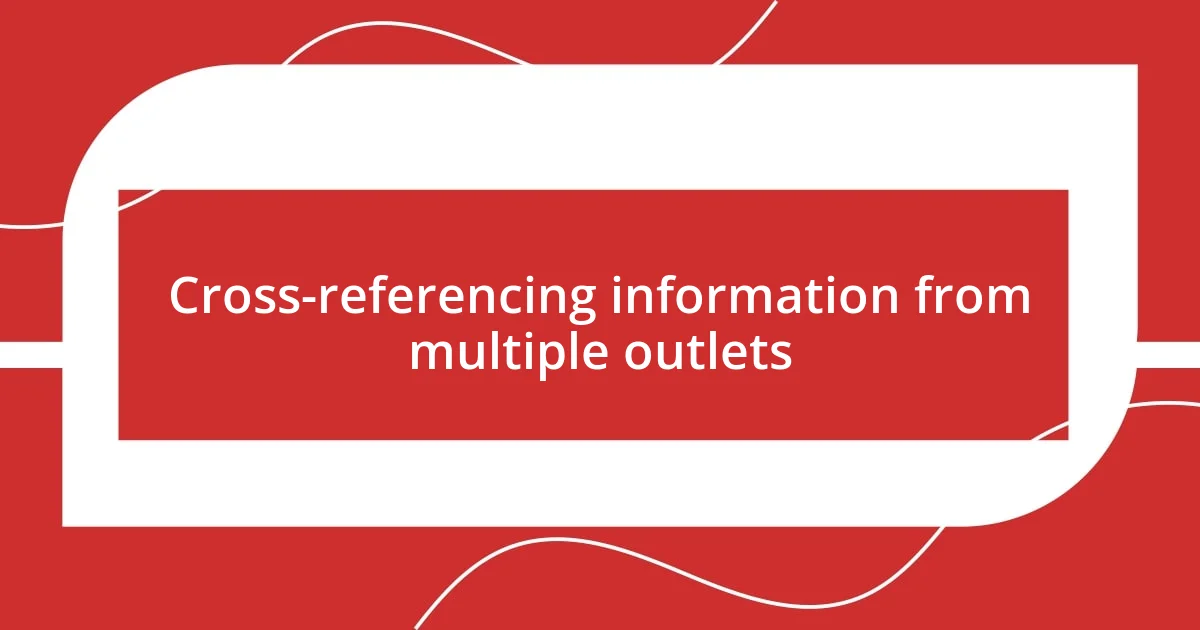
Cross-referencing information from multiple outlets
When I set out to cross-reference information, I find that comparing details from multiple outlets can be quite enlightening. One time, I read about a political situation that was being reported dramatically different in two foreign publications. By delving into each article, I noticed notable discrepancies in the facts presented. This experience underscored for me how crucial it is to look at a variety of sources to piece together a more accurate picture.
I also use this practice as a way to explore nuances. I remember a time when a viral health crisis story was circulating. Some outlets emphasized fear and uncertainty, while others focused on prevention and recovery efforts. Not only did this cross-referencing help me understand the broader narrative, but it also shaped my emotional response to the situation. I wondered: How can a single event be portrayed so differently? For me, it became clear that seeking diverse perspectives not only enriches my understanding but also helps alleviate unnecessary panic.
Engaging with foreign media is like being part of a conversation that spans the globe, and I relish this dialogue. I often jot down notes as I read, drawing parallels between reports and identifying patterns. One instance that stands out was when I saw enormous variations in coverage of an election abroad. Connecting the dots between different viewpoints empowered me to discuss the implications intelligently with my peers. It made me reflect on how pivotal cross-referencing is—both for staying informed and for honing my critical thinking skills. Don’t you think this kind of engagement transforms us into more discerning consumers of information?
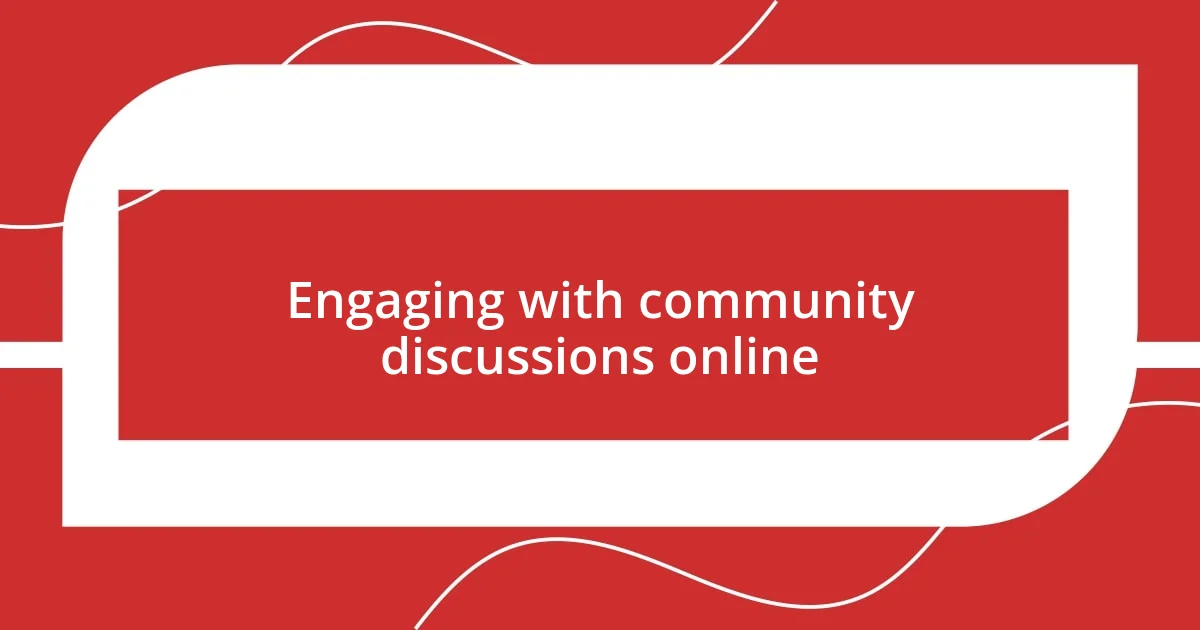
Engaging with community discussions online
Engaging in community discussions online is an essential part of navigating misinformation, especially when it comes to foreign media. I recall participating in a lively forum where individuals shared their views on a recent international event. The diversity of perspectives was eye-opening; it was like a tapestry of opinions woven together. Through these conversations, I found myself questioning my own assumptions, as others presented arguments I hadn’t considered. Isn’t it fascinating how dialogue can challenge our viewpoints and lead us to more informed conclusions?
I also make it a point to ask questions in these discussions. For example, during a chat about a controversial policy in another country, I asked participants what sources they relied on for their information. Hearing about their go-to resources opened my eyes to platforms I wasn’t aware of. This interaction reminded me of the power of community; it struck me that discussing misinformation isn’t just about debunking claims, but about collectively seeking the truth. Don’t you think that actively engaging in these conversations enriches our understanding of complex issues?
What really excites me is the opportunity to bring personal experience into these exchanges. When I share my own encounters with misleading reports, it often sparks deeper conversations. I remember sharing an instance where I initially believed a sensational headline about a foreign protest. As I elaborated on my journey of fact-checking and cross-referencing, others felt encouraged to share their stories too. This mutual sharing fosters a supportive environment where we can learn from each other. Isn’t it incredible how genuine connections can enhance our approach to tackling misinformation together?
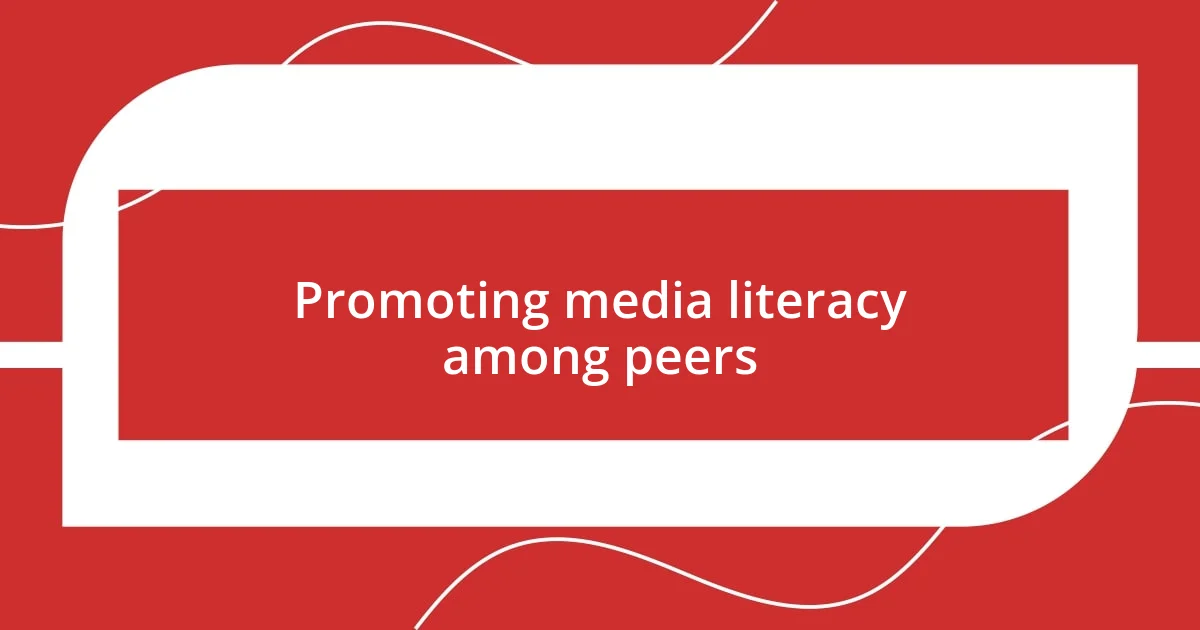
Promoting media literacy among peers
Promoting media literacy among peers is a rewarding endeavor for me. I’ve often found that simply sharing interesting articles can spark engaging conversations about the reliability of sources. For instance, I once shared an article about climate change from a foreign outlet in my study group, which led to a spirited debate on how different cultures frame environmental issues. It was enlightening to witness my peers critically assess the article’s content, helping everyone refine their analytical skills.
In my experience, hosting informal media literacy workshops has proven effective. I remember organizing a small gathering where we dissected various news articles and identified biases together. Watching my friends become more confident in questioning information—rather than just accepting it—instilled a sense of accomplishment in me. Have you ever felt that moment when someone finally “gets it”? It’s truly inspiring to see them light up with understanding and recognize the importance of skepticism in their news consumption.
Moreover, I believe storytelling can be a powerful tool in promoting media literacy. I share personal stories about times I fell for misleading headlines, like that one viral social media post about a so-called “miracle cure” for a common illness. As I recounted my initial gullibility and the subsequent research journey I undertook to debunk the claims, I noticed my friends becoming more engaged. Shouldn’t we be using personal narratives to break down complex topics? This method not only makes the lessons relatable but also reinforces the idea that we’re all learning together as we navigate the sometimes murky waters of media.
